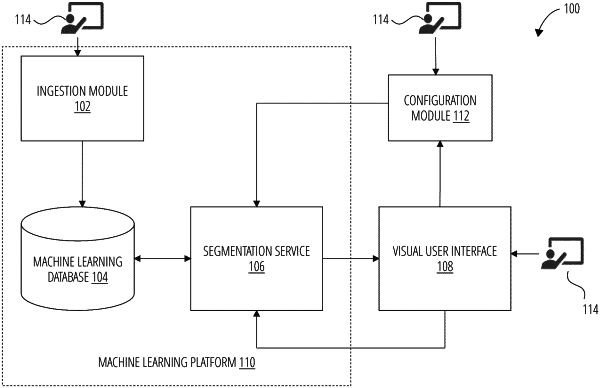| CPC G06F 16/906 (2019.01) [G06F 18/251 (2023.01); G06N 20/00 (2019.01)] | 21 Claims |

|
1. A computer-implemented method comprising:
receiving, by a segmentation engine, data associated with each item of a plurality of items, each item associated with one or more attributes;
engineering, by the segmentation engine, features associated with one or more signals, the one or more signals comprising either: i) one or more internal signals associated with the data; or ii) one or more internal signals associated with the data and one or more external signals;
selecting, by the segmentation engine, a set of the engineered features;
training, by the segmentation engine, a plurality of cluster-based machine learning models on the set of the engineered features;
generating, by the segmentation engine, a plurality of segmentations of the plurality of items;
selecting, by the segmentation engine, a first segmentation of the plurality of segmentations based on one or more cluster-based metrics;
visualizing, by a visual user interface, the first segmentation of the plurality of segmentations; and
amending, in response to a user input received via the visual interface, one or more segments within the first segmentation of the plurality of segmentations;
wherein amending comprises:
retraining the plurality of cluster-based machine learning models; and
selecting, by the segmentation engine, a second segmentation of the plurality of amended segmentations based on one or more cluster-based metrics.
|